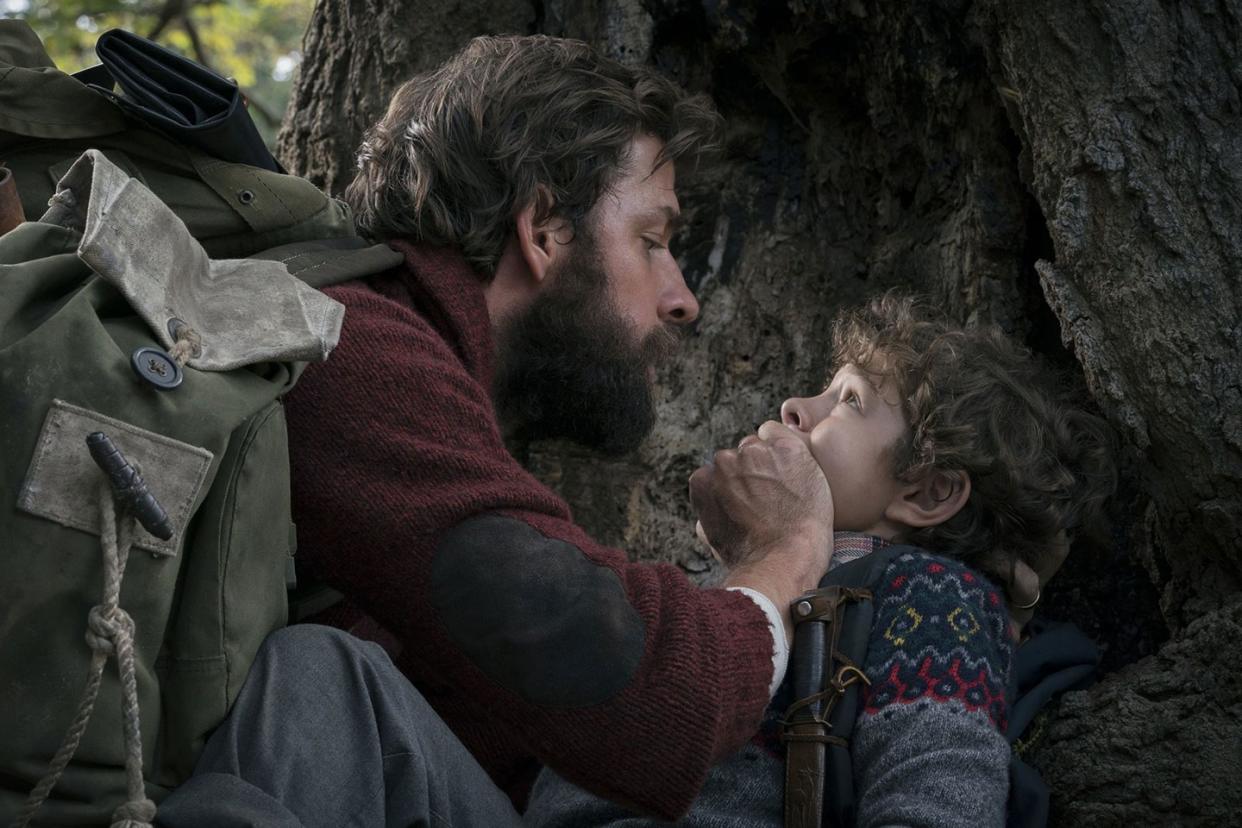SXSW Review: A Quiet Place Transcends a Familiar Premise to Deliver Genuine Chills

Several years into a flourishing Hollywood career, The Office alum John Krasinski radically reinvented himself from wry, lanky leading man to muscle-bound action hero in projects like Michael Bay’s 2016 film 13 Hours and the upcoming Jack Ryan series. Now he’s done it again moving from actor to impressively effective genre director with the monster-infested A Quiet Place, which debuted at SXSW Friday night. Though it’s Krasinski’s third time in the director’s chair, it’s his first home run thanks, in no small part, to the film’s emphasis on family and Krasinski’s choice of leading lady—his wife and mother of his two children, Emily Blunt.
The movie centers on a small, nameless family living in rural, post-apocalyptic New York who must live out their lives in near silence thanks to a recent infestation of lightning-fast, lethal monsters who hunt entirely based on sound. Krasinki and Blunt play parents to two young children: an incredibly fearful boy (Noah Jupe) and a rebellious and perpetually frustrated adolescent girl (Millicent Simmonds). The girl’s frustration is understandable under any circumstances—imagine being a teenage girl who isn’t ever allowed to yell or even have a long, noisy cry—but exacerbated by both a tragedy that fractures the family early in the plot and a hearing impairment that her father is perpetually trying to “fix” with homemade technology.
It is implied, though never said explicitly, that this small family has survived much longer than their neighbors thanks to everyone’s knowledge of sign language. The bulk of the movie’s dialogue is carried out in frantic and occasionally heart-breaking signs. Simmonds leverages her real-life experience as deaf teenager to deliver a deeply convincing portrait of a girl who feels shut out of her own family, but it’s Jupe who is the most astonishing silent actor of the film, dishing up paralyzed, soundless terror in several different flavors. The whole family’s carefully constructed existence could come crashing down at any moment, especially when it’s revealed, ominously, that Blunt’s character has a baby on the way. Childbirth and newborns don’t exactly fit easily into a silent world populated by humanoid critters, designed by ILM, that move with alarming, brutal speed and possess a gruesome and glistening over-sized ear canal that’s always listening.
The unusual premise, last used to comedic effect in the campy 1990 cult classic Tremors, means that A Quiet Place’s first act has to do some sweaty lifting to get the audience up to speed enough to enjoy the movie’s pulse-pounding middle and end. Some of the film’s world-building requires no explanation. Like, for example, the narrow trails of sand the family has poured down on their most frequent routes to town and back again in order to deaden sound and soften the concrete and gravel roads for their perpetually bare feet, or rows of lights strung along their sprawling New York farm that are used, noiselessly, to convey danger. But in other places, the film threatens to break the rules of show not tell beyond repair. At one point the camera lingers on a series of headlines detailing the fall of civilization to these monsters; in another scene, Krasinski’s character uses a white board to helpfully scribbled questions and answers like “what are their weaknesses??”
But once the film switches from explaining the terror of this world to showing the family in the grips of it, Krasinski reveals himself to be quite a cunning master of horrific set ups. He’s given a huge assist here by Blunt who dives into the acting challenge of almost wordless performance with evident relish. It’s Blunt who delivers some much-needed humor at the top of the film turning an intimate tutoring session between mother and son into some nimble clowning. And Krasinski gives her the film’s most harrowing and pulse-pounding action sequence.
But the success of the film hinges almost entirely on the way in which real-life couple and parents Blunt and Krasinski poured their fears about raising children into their performances here. As is the case with most successful, spare horror films of late, A Quiet Place has much more to say about its humans than its monsters and is especially invested in the ways families fail to communicate even their most basic needs to each other.
Tip-toeing quietly along the path laid by The Babadook, It Follows, and The Witch, this movie rises above its occasionally goofy premise thanks to audience investment in this little family unit. Blunt and Krasinski have to do so little work to sell their connection to each other—one brief and tender slow dance will do—that they have time to spare to devote to wordlessly bonding with their fictional children. In the end, it’s not the monsters of A Quiet Place that will suck audiences in, and that might be Krasinski’s most impressive accomplishment of all.

